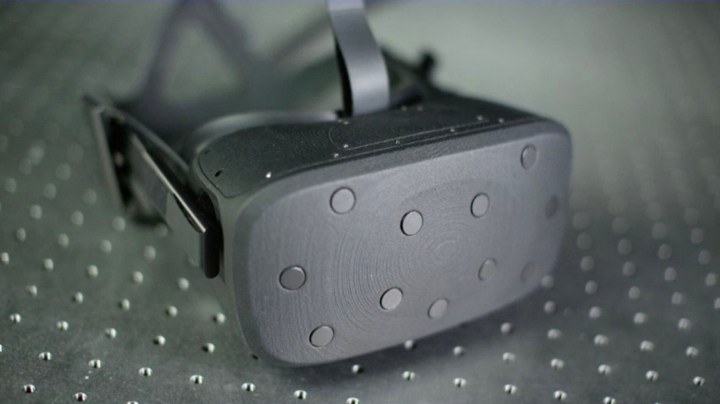
VR is still maturing as a platform, and Oculus is fully aware of its inherent issues and limitations. Today, May 2, at Facebook’s F8 developer conference, Oculus unveiled a new prototype designed to combat some of the most pernicious issues people have had with the visual quality of VR headsets so far: focus and field of view.
Oculus’ head of Core Tech, Maria Fernandez Guajardo, unveiled the new “Half Dome” prototype as part of a presentation on the future of VR. The new prototype is designed to tackle these two issues head on. First, Oculus is using its previously described “varifocal” lenses — think mechanical autofocus but for your eyes — to track what you’re looking at and dynamically adjust focus to compensate, just as your actual eyes do.
In VR this has been something of a problem because software can only go so far toward simulating depth of field and focus, especially when something is right up close to your face. Oculus’ varifocal lenses work with software and hand tracking to determine when something is close to your face in VR, and will adjust the physical focus of the internal lens array accordingly.

Additionally, the new lens assembly features a much wider field of view than the original Oculus Rift. The Rift has a field of view of 110 degrees, which means if you look around inside the headset, you’re going to see the edges of the screen pretty frequently. The Half Dome prototype on the other hand reportedly boasts a 140-degree field of view, much wider than the original Rift.
This new field of view encompasses your traditional field of view, but also your peripheral vision, which is an important component of how we perceive environments. Whether or not it will have a significant impact on immersion remains to be seen, but it’s still an impressive improvement, and when coupled with a dynamic “varifocal” technology, it’s easy to see why the Half Dome prototype could be an important addition to the Oculus family.
“Our advances are helping to bring the future into the present,” Guajardo said. “We are proud of the progress so far, fascinated about the work we are doing, and excited about the possibilities to come.”
At the end of the keynote, Guajardo continued, reiterating Facebook’s — and by extension Oculus’ — devotion to bringing people together. Guajardo highlighted the social potential of VR, and how overcoming technical hurdles that make VR less than immersive will pave the way for more realistic social experiences in VR going forward.


